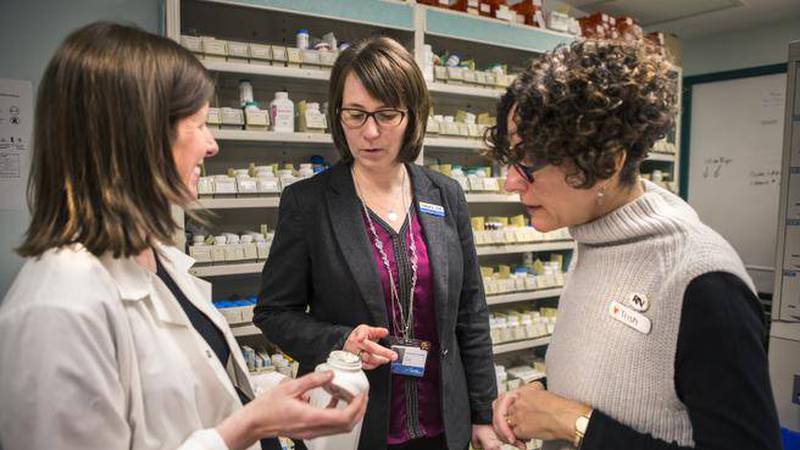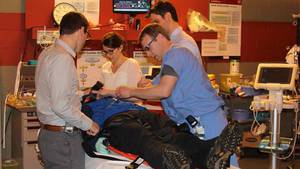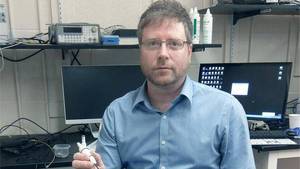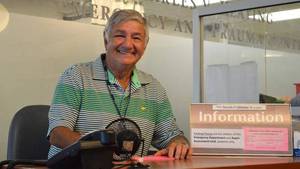The breadth and depth at which Alzheimer’s disease affects a person’s life is staggering. Beyond memory loss, approximately 50 per cent of patients living with dementia may experience delusions and hallucinations.
For some, if these delusions or hallucinations are traumatizing for them, then they may be prescribed an antipsychotic medication. Nationally, one third of all residents in long-term care facilities are prescribed an antipsychotic although about 27.5 per cent of these seniors do not have a diagnosis of psychosis (delusions or hallucinations). Some individuals enter long-term care already on the medication and others are given it as a way to help responsive behaviours like aggression.
When the opportunity for an interdisciplinary team to take part in a Canada-wide quality improvement initiative aimed at reducing inappropriate use of antipsychotic drugs came about, staff working in Veterans Services at the QEII Health Sciences Centre’s Camp Hill Veterans Memorial Building were keen to get involved.
This national initiative involved 56 long-term care sites testing the hypothesis: could inappropriate use of antipsychotic drugs be reduced?
Before joining the program, 17 per cent of veterans living at Camp Hill were prescribed antipsychotic medications. After the initiative, only 13 per cent of residents remained on the medication.
Starting out lower than the national average and managing to still reduce inappropriate use of the medications are figures that make clinical nurse specialist and dementia care consultant Trish Bilski proud.
“Our staff is really familiar with using non-pharmacological interventions before turning to medications,” Trish says, noting that non-pharmacological interventions in individuals living with dementia are 60 to 70 per cent effective. “There is still a time and a place to use these medications. We’re not saying ‘never use them’; we’re saying ‘use them appropriately’.”
After staff was educated on appropriate use, the 12-month program began with a single resident. Using a behaviour tracking tool to monitor any concerning changes, the team slowly weaned the resident off the drug, and soon the resident was more alert, engaging and generally happy, Trish says.
As other residents were included, glimmers of success were visible. Rates of aggressive behaviour did not increase and referrals to senior’s mental health remained the low.
Residents who were successfully weaned from the medication were steadier on their feet, less drowsy and in some cases, able to feed themselves, clinical pharmacist Melissa Gehrig adds.
“One gentleman had been weaned off a medication that he'd been taking when he arrived. Once the medication was stopped, he was much more engaged and participating in activities and easier to talk to,” Trish says. “That was a positive outcome for him.”
Participation in the initiative enabled the facility to analyse their medication data and talk openly about appropriate use of antipsychotic medications.
“Having every discipline be a part of it was a big driving force for our success; we have a big interdisciplinary team here,” Melissa says. “Now we talk about appropriate use during patient care rounds with the whole team present and we track numbers on a monthly basis so the information can be shared with the teams. It makes us all alert and aware.”
Clinical nurse educator Natasha Symes-Osmond agrees, adding that the project has inspired a cultural shift at the QEII's Veterans Memorial Building.
“Previously to participating in the quality improvement initiative, when a resident was admitted on an antipsychotic medication, the staff did not want to adjust the dosage because they were on it for a presumed appropriate indication. Since starting the initiative, the interdisciplinary team is continually questioning why the resident is on the antipsychotic, is it the correct dosage for the resident and is it prescribed for an appropriate indication?” Natasha says. “Whether it’s our nursing staff or physicians, everyone is taking part and wanting to get to the bottom of why they’re on that medication. It’s had a positive effect throughout the building.”








